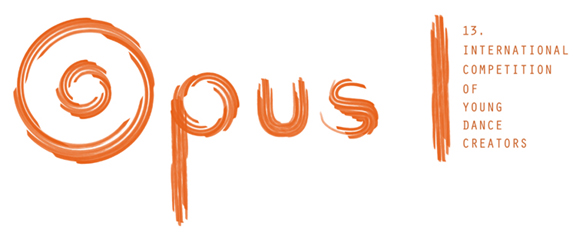|

OPUS 1 – PLESNA MINIATURA 2022
13. MEDNARODNO TEKMOVANJE MLADIH PLESNIH USTVARJALCEV
Slovensko ljudsko gledališče Celje, 16. april 2022
13. International Competition of Young Dance Creators
OPUS 1 – Short Dance Piece 2022
Slovenian National Theatre Celje, 16th April 2022
THEMES
1. CI (50 years of Contact Improvisation)
2. WHATEVER
1. CI (50 years of Contact Improvisation)
In 2022 we will mark 50 years of Contact Improvisation (CI). Half a century ago, in the (not so) distant 1972, Steve Paxton used about ten days to create a 15-minute performance for eleven dancers called Magnesium, which already contained some of the principles of the technique now known as CI. Over the next ten years, he and his colleagues developed it into a dance method that continues to be both widespread and actively developed today. The idea of continuous research, an investigation that never ends, is part of CI’s DNA.
CI has also called "contact dance", "martial arts dance" (it was greatly influenced by Aikido) and "art sport". It originated during a specific social climate in late 1960s and early 1970s and, as such, contains the values and issues of that period.
At the same time, CI can also be rightly seen as the greatest revolution in twentieth-century dance. During a time when dance was dominated by techniques based on aesthetics and named after their originators, contact improvisation offered an alternative: that of NO hierarchy, NO dramaturgy, NO choreography, NO form. It drew its inspiration for movement from delving into the relationship between the body and the environment, and no longer from moulding the former into previously devised forms.
CI is today an international platform, employed by a wide range of people around the world. Less recognizable, however, are the traces it left on 20th and 21st century dance. Not because there are so few of them, but quite the opposite: the traces are invisible because they are so numerous and because they can mainly be found at the root level of dance today. Communication through touch, recognizing the effects of gravity on the body and movement, building a relationship on the principle of equality, working with the floor, surrendering to the flow of the dance... All these are elements that were once revolutionary in dance, but are self-evident today.
At its fiftieth anniversary, we remember the past, are aware of the present and look to the future. As in the 1970s, we are living in momentous times. What kind of springboard does CI offer us to create something new? What does our time need? What could be the next idea that will bring people together and empower them? Can dance today still change the world by changing those who take part in it?
Moreover, what does CI offer nowadays as a tool for creating a solo or a duet? The most obvious answers, though at the same time perhaps the least interesting, are the aesthetics and “style” of CI movements. Then there are the principles: in addition to the above there is sharing the centre of gravity, tracking the flow of movement, improvisation through contact with the ground - solo or in a duet… And the physical parameters: working with weight, gravity, reflexual movement, with falling...
The possibilities are truly endless. And, as already mentioned, CI is inextricably intertwined with our culture and dance. It would be almost as interesting to try and create a dance performance that does not contain any of its elements. After all, why not?
Jurij Konjar, dancer, improviser, choreographer, researcher, writer, curator and organizer
2. WHATEVER
But if the theme above does not inspire you, you are free to do, well, whatever. Whatever is in you, whatever is around you, whatever you are looking for, whatever you are wondering about, whatever you question, whatever you are interested in… we are interested as well!
Guidelines for mentors and creators:
The required part of the creative process should include translating your ideas and procedures into words. The same as every year, you have to attach a description of your creative process to your application (literary origins, thoughts, procedures, decisions…). Think about it and work on it so as to genuinely delve into the depths of your short dance piece.
The theme is designed to offer a wide scope of possibilities to all artists, regardless of their age. Mentors should discuss it with young creators, while the latter should be autonomous and creative in shaping their ideas and pieces.
The role of mentors in creating the short dance piece is to counsel, lead and guide the young creators in creating their own ideas, dance expressions and autonomous choreographies.
Approach the theme with exploratory zeal and creative inspiration.
Think and work on it to really delve into the creation and formation of the short dance piece, thus meaningfully fulfilling the concept, process and results of your work.
|